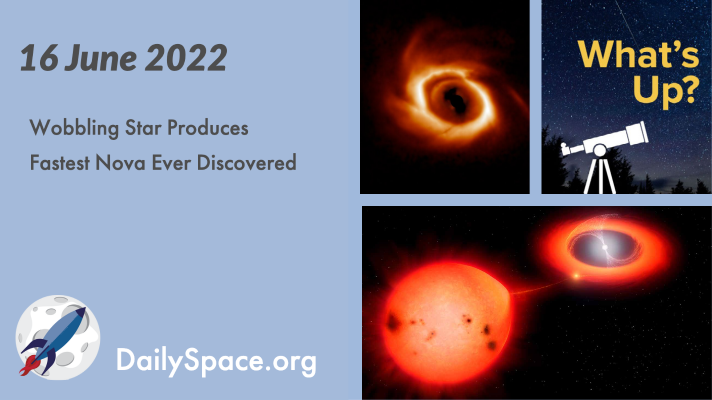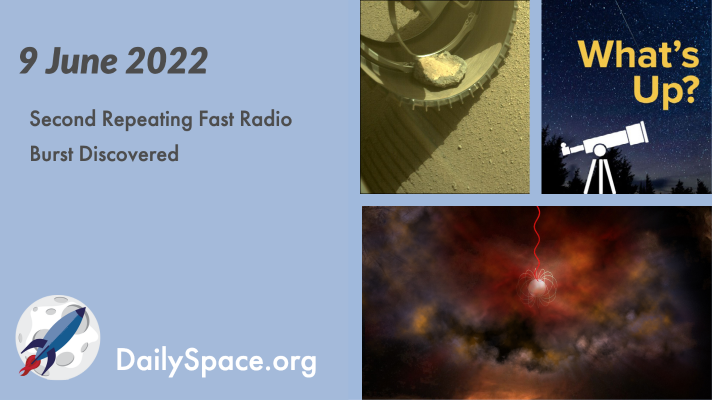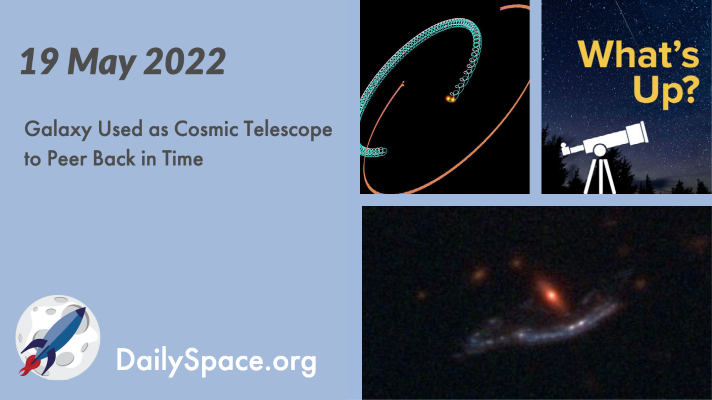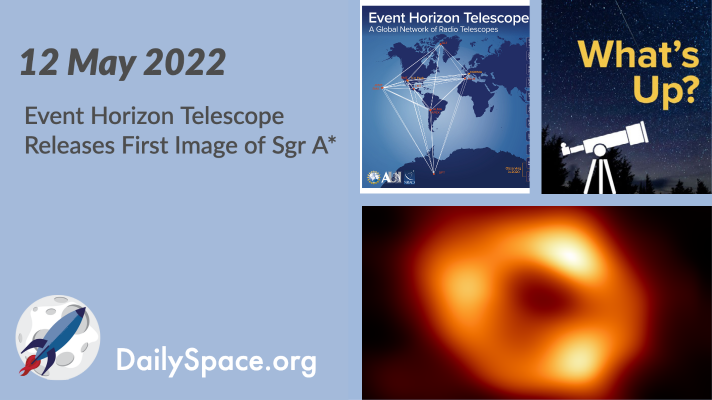
Jun 17, 2022 | AAS, Asteroids, Daily Space, Earth, Exoplanets, Nebulae, Sky Watching, Spacecraft, Star Forming Region, Supernovae, The Sun, White Dwarfs
Observations of V1674 Hercules reveal a nova produced by the white dwarf star that dimmed in only one day. Additionally, the strange star wobbles every 501 seconds, producing flashes in visible and X-ray light. Plus, more results from the 240th meeting of the American Astronomical Society, a farewell to SOFIA, and What’s Up is the June solstice.

Jun 10, 2022 | Daily Space, Fast Radio Bursts, JWST, Mars, Neutron Stars / Pulsars, Perseverance, Rockets, Sky Watching, Space Policy, Spacecraft, SpaceX, Starlink
A second repeating fast radio burst was detected in 2019 by China’s FAST observatory and confirmed in 2020 by the Very Large Array. This latest discovery raises the possibility that there are two different types of FRBs. Plus, a SpaceX commercial launch, mission updates, neutron stars, and this week’s What’s Up.

May 20, 2022 | Daily Space, Earth, Galaxies, Moon, Sky Watching, Spacecraft, Star Forming Region, Stars, Supernovae, The Sun
With a groundbreaking technique, astronomers have used a galaxy as a gravitational lens to backlight two hydrogen clouds, peering back 11 billion light-years at our early universe. Plus, volcano water on the Moon, a quadruple star system, and this week’s What’s Up takes a careful look at the Sun.

May 13, 2022 | Daily Space, Milky Way, Observatories, Sky Watching, Supermassive Black Holes
In an early morning announcement, the Event Horizon Telescope collaboration finally revealed their first image of Sgr A*, the black hole at the center of the Milky Way galaxy. We have a special episode entirely about this amazing new image and the science behind it. And this week’s What’s Up is a total lunar eclipse.

May 6, 2022 | Daily Space, Neutron Stars / Pulsars, Science, Sky Watching, Supermassive Black Holes, The Sun
The flash of a pulsar about 3,000 light-years from our solar system was caused by a ‘black widow’ binary consuming a smaller star. Intriguingly, a third companion star is orbiting the pair, which may have originated near the Milky Way’s center. Plus, the Sun is ramping up, Chandra releases more sonification videos, and this week’s What’s Up is all about occultations.

Apr 29, 2022 | Daily Space, Earth, Galaxies, Mars, Perseverance, Science, Sky Watching, Supernovae
An analysis of images taken by the Spirit rover of olivine-rich rocks in Gusev crater has revealed a much more violent volcanic origin than originally thought and one that likely occurred early in Mars’s history. Plus, balloon science, more Mars, more volcanoes, pretty Hubble images, and What’s Up (a supernova!).








 We record most shows live, on Twitch. Follow us today to get alerts when we go live.
We record most shows live, on Twitch. Follow us today to get alerts when we go live.